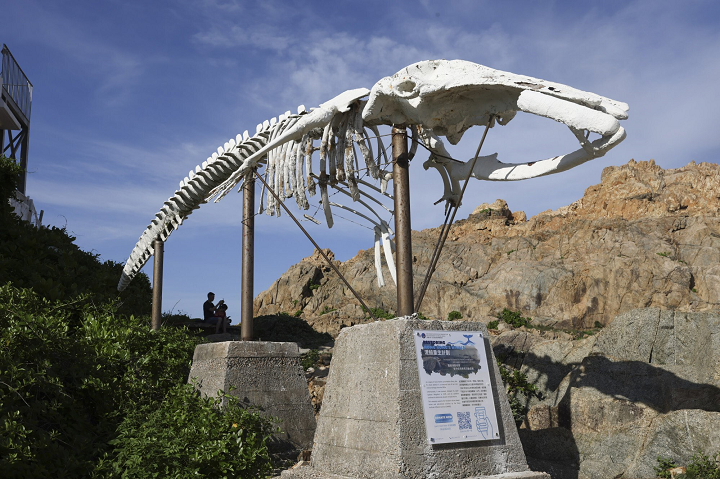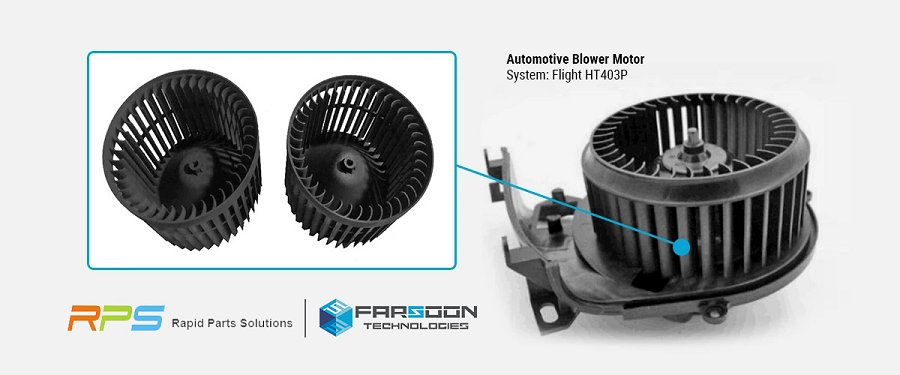In this edition of 3D Printing News Briefs, PrintParts has appointed a new executive, and a successful blockchain-based 3D printing solution was developed that will enable cryptographic protection of 3D design files. Moving on, the Farsoon Flight HT403P system was used to customize functional automotive parts. Finally, a 3D printed version will replace a whale skeleton on the rocks of Cape D’Aguilar.
PrintParts Appoints Chief Product Officer
AM services provider PrintParts Inc. has appointed Ashley Kerth as its Chief Product Officer to be in charge of developing the company’s new SmartParts solution for traceability in additive manufacturing. Not long ago, the company was accepted to the Microsoft for Startups Program, so it will be able to use Microsoft’s internal consulting team, and its funding, to keep developing the SmartParts platform, which is being set up as an industry-wide authentication and traceability solution. Kerth was most recently responsible for product management and strategy of Hexagon’s Smart Factory solutions.
“Traceability and part serialization is a challenge that has yet to be solved for additive manufacturing. Working on a groundbreaking technology project like SmartParts is a unique opportunity to bring together 29 years of experience delivering manufacturing and digital solutions with a global network of relationships to fill this gap; allowing additive manufacturing to truly scale to production and unlock the Additive Manufacturing 2.0 era,” Kerth said.
3D Printing-Based Blockchain Solution for Industry 4.0
In order to bring Industry 4.0 business solutions, like 3D printing, to the European Union, its interregional initiative Interreg partnered with Ambitorio, an intellectual property (IP) protection provider, and blockchain infrastructure provider CoreLedger, to develop a blockchain-based 3D printing solution, which will allow for the cryptographic protection of 3D design files and related IP. This successful solution will also help stimulate the local economies by opening up new manufacturing opportunities, as 3D printing is helpful for reducing logistics expenses and the need for cross-border transportation. The COVID-19 pandemic has really opened the world’s eyes to inherent weaknesses in trade networks, and with this blockchain project, new business opportunities within Europe should hopefully start to open up, and 3D printing-related IP will be safe from being copied.
Powered by Aniwaa
“We learnt last year about the fragility of global supply chains, and nations are now looking inward to build domestic solutions to respond to supply and demand,” said Johannes Schweifer, CEO of CoreLedger. “3D printing enables the production of more local and sustainably-developed materials while reducing reliance on fractured supply chains. Until now, 3D printing manufacturers have faced challenges with the safe transfer of data and duplicating of blue-prints which has so far held the advancement of 3D printing initiatives back.”
RPS Using Farsoon Flight Technology to Customize Automotive Parts
Shenzhen, China-based Rapid Parts Solutions (RPS) is the chosen part supplier for many Tier 1 car manufacturers, offering a wide variety of rapid prototyping technologies, from injection molding and vacuum casting to SLA, DLP, and SLS 3D printing. But recently it expanded its manufacturing capabilities by adding two industrial Farsoon Flight HT403P systems, which use Laser Powder Bed Fusion technology. Because the printers offer such an improved production capacity, RPS has been receiving an increased amount of series customization orders from its automotive customers, and can now offer faster lead times for on-demand production, as well as a higher production yield in a single process. This combines to achieve what RPS says is an average of 90% reduced production cost for parts with more details, higher strength, and a smoother surface finish, like the automotive blower motor in the image above that stabilizes airflow and defroster efficiency in an HVAC system.
“We are excited to have Farsoon as our partner in powder bed fusion technology; the simplicity of the machine operation and competitive price of the Farsoon materials helps us achieve true economy production,” said Mr. Deng, Head of the RPS Additive Manufacturing Business Unit. “With the increasing on-demand orders we have received since the two Flight 403P installations, we are now planning to add more systems to further expansion of our plastic laser sintering production capabilities.”
3D Printed Replica of Hong Kong Whale Skeleton

The skeleton of the whale at the Swire Institute of Marine Science (SWIMS), University of Hong Kong, at Cape D’Aguilar. Photo courtesy of K.Y. Cheng.
In 1955, a 21-foot-long baby male fin whale was found floating in Victoria Harbour, Hong Kong—an extremely unusual scenario. As the animal was starving, and nowhere near its mother, police took the humane route of euthanizing it, and a Hong Kong University (HKU) research boat that happened by took the carcass to the south side of Hong Kong Island, where the 2¼ tonnes of meat it yielded were put into cold storage so it could be fed to Chinese refugees. Since 1991, the whale’s skeleton has sat on the rocks of Cape D’Aguilar, next to a Swire Institute of Marine Science (Swims) research facility, as a symbol of marine conservation, but 30 years of typhoons have roughed it up, and several of the bones have been damaged. That’s why HKU research assistant Philip Thompson is leading the institute’s Restoring Hong Kong’s Whale” campaign, which is raising money to not only repair the skeleton but also support outreach and educational activities. The original bones will be preserved at a new Swims biodiversity center, and Hong Kong company Addify has 3D printed replica bones designed to withstand salt spray, hot summer weather, and even typhoons; that way, the young whale skeleton can continue to watch over the site, which just opened last month.
“He represents our responsibility to conserve and protect the marine environment,” Swims director Professor Gray Williams said about the skeleton. “The whales’ bones are now programmed into our system, so if we need to replace one, we can 3D print it.”


